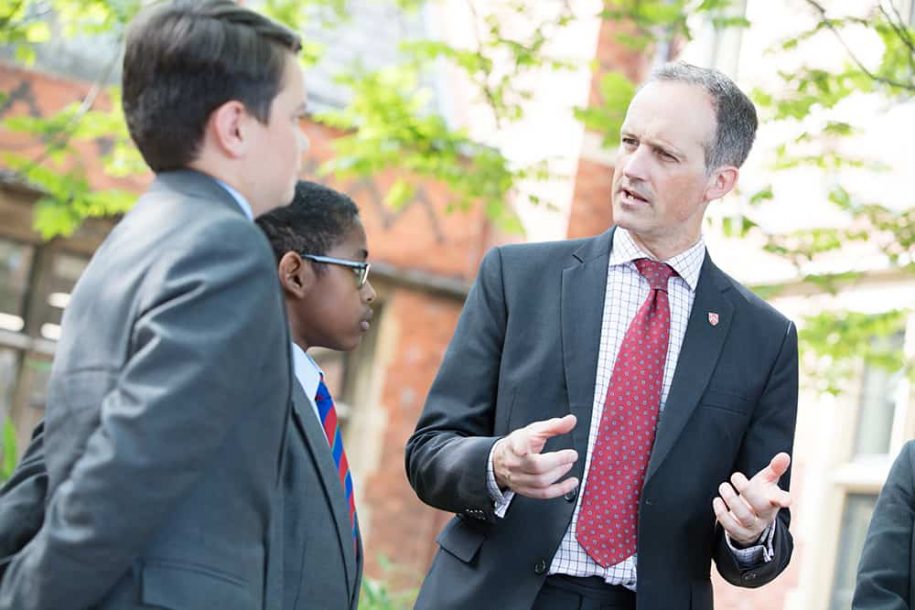Adolescents and risk-taking

The word ‘adolescence’ is something of a dirty word, and we have a tendency to bandy it about whenever we seek to criticize what we might consider the anti-social reactions of the young people in our lives. It is easy to forget that we were all once adolescents, and that we went through precisely the same unsettling phase ourselves. Earlier this week, I was privileged to attend a lecture given by Sarah-Jayne Blakemore, the Professor of Cognitive Neuroscience at University College, London. Her specialism is the adolescent brain, a topic that I am naturally keen to learn more about, and her book ‘Inventing Ourselves: the secret life of the adolescent brain’ was published to great critical acclaim last March. We often talk about the hormonal changes in teenagers, but she pointed out that the challenges of adolescence are explained better by the profound neural changes that every young person undergoes, albeit at different rates and intensities.
Professor Blakemore’s starting point is that adolescence isn’t an aberration, but an essential phase in becoming an independent and social human being. For example, we know that teenagers are much more self-conscious – which is why you, as parents, are suddenly seen as <u>so</u> embarrassing! However, this sense of self is vital for young people to acquire so that they can become self-regulating adults. Similarly, she points out other typical ‘adolescent’ behaviours such as an increased sense of the importance of peer group, or sensation-seeking (as she prefers to term ‘risk-taking’) are seen in all cultures, and indeed in other mammals such as mice and primates.
It is this urge for ‘sensation-seeking’ that I would like to explore further. I am no scientist and I am, of course, aware that a little knowledge is a dangerous thing, but advances in neuroscience are being followed very carefully by us educators, as we determine how best to deal with complex health and developmental issues in our PSHE programme (Personal, Social and Health Education). How do we help boys during these challenging years to make the right decisions about smoking, alcohol, drugs, pornography ….?
Naturally, you have the same concerns, and I know from the difficult meetings I occasionally have to have with families when mistakes have been made that there is nothing more upsetting to a parent than when a son has done precisely the thing that he has been warned against doing. It is tempting for parents to blame themselves – to attribute their son’s apparently inexplicable behaviour to some fault in their parenting. However, Professor Blakemore emphasizes that this is unlikely to be the case. The reality is that the adolescent brain is pre-conditioned to risk-taking. Research shows that the brain’s desire for sensation-seeking peaks in late teenage years before declining rapidly during one’s twenties. Furthermore, the neural impulses are even stronger when an adolescent is accompanied by his or her peers. The teenage need for social acceptance intensifies risk-taking. So, when your son passes his driving test, try to limit the opportunities he has to carry his friends as passengers. He is unlikely to take risks without their presence.
The risk-taking that worries me most as Headmaster concerns illegal drugs, not least because recent press coverage suggests that usage is increasing rapidly among the 16-25 age range. A <a href=”https://www.tes.com/news/drug-gangs-targeting-private-school-pupils-warns-ofsted”>recent article</a> in the teachers’ Bible, the Times Educational Supplement, warned that independent school pupils were being targeted by drugs gangs because they had greater financial resources and were less likely to raise suspicion. It’s easy as a parent to dismiss this risk, reasoning that ‘my son knows right from wrong and would never be foolish enough’. However, I would urge all parents to understand that, during adolescence, the most placid, compliant boy is nevertheless capable of dreadful decisions, and that we must be wary of looking blindly the other way.
Professor Blakemore’s objective in her lecture was not to scare, but to explain. She pointed out that an adolescent’s hyperactive brain conferred huge benefits in terms of creativity and capacity for learning. In addition, there are signs that adolescents are becoming more sensible in many aspects of their lives. Cigarette smoking has declined significantly, as have teenage pregnancies, and 25% of young people now do not drink alcohol at all. In addition, studies have shown that they are willing and capable of changing their risky behaviours, particularly when confronted with the negative effects of their actions on others. Because social interaction is so important to teenagers, research has demonstrated that anti-smoking adverts that focus on the negative impact of second-hand smoke on family members and friends, or on how smokers are negative role models, are much more successful in dissuading young people from smoking than brutal facts about deaths from cancer and heart disease. In a boys’ school, this understanding of teenagers’ motivations has influenced how we deal with the subject of pornography for example. In the past, the moral dimension would have been prioritised, but this has been shown to have little effect. Now, boys react much more maturely to the issue when asked to consider how regular use of pornography might affect the ability to have a meaningful relationship: “how would it make your future partner feel if you could only view her/him as a sexual object?”
If this superficial introduction has piqued your interest, Professor Blakemore’s book is called ‘Inventing Ourselves: The Secret Life of the Teenage Brain’. For me, it managed to explain the science in an accessible way. If you are looking for a Christmas stocking filler for your son, I would heartily recommend the more conversational ‘Blame My Brain’ by Nicola Morgan. This is written for a teenage audience and is at just the right level for our bright 13-16 year olds.
